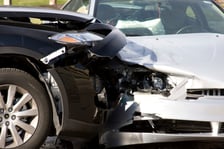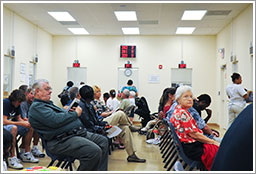 Have you ever thought about what would happen if you exceed your liability limits?
Have you ever thought about what would happen if you exceed your liability limits?Many people believe that they are good drivers, and therefore do not need a lot of insurance. However, we would like to point out that no driver ever thinks that they are going to have an accident. Yet, in Wisconsin alone there are consistently over 273 accidents per day, and more than one of those accidents will result in a fatality (WI DOT).
Wisconsin law requires you to have a minimum liability coverage of 25/50/10, which means:
- $25,000 per person for bodily injury or death
- $50,000 total for injury or death to multiple people per accident
- $10,000 for property damage to others
Though some may take this as the state saying that this level of coverage is good enough, we would never advise anyone to have liability limits so low. In fact, some quality insurance carriers will refuse to write anything lower than 100/300/100. There are many good reasons for this.
Perhaps the easiest to understand is the limit for property damage. This coverage would pay for damages to other vehicles, street lights, fences, etc. Now think about your daily commute. How many vehicles do you drive next to every day that are worth more than $10,000? A brand new Ford F-150. A two-year-old Chevy Equinox. Any Lexus, BMW, or Acura. A limit of only $10,000 may not be enough to repair and certainly not enough to replace many of the cars on the road. But when this limit is exhausted, it is not the end of the claim.
The owner of the car is going to want the vehicle fixed or replaced, and they are not going to pay for it themselves. When the $10,000 limit is cashed, your bank account and other assets can be used to pay for damages. One way or another, someone else is going to pay for those repairs. Either the liability limits on the policy will be high enough for the insurance carrier to cover the cost, or your savings, assets, and/or future paychecks will.
What is harder to understand but is also a bigger threat to your future earnings is the limit for bodily injury. Medical attention and emergency services do not come with price tags. We have a much more difficult time wrapping our heads around how much any type of surgery or doctor’s appointment will cost. However, I can assure you that these expenses can easily exhaust a low limit.
Recently, I had a small and planned surgery. I was only under the knife for 45 minutes and only in the hospital for 3 hours. No follow up appointments were required. Want to know what the final bill was to my health insurance? Answer: $22,000. A surprising number, right?
Now imagine that instead of a planned surgery, there was an emergency situation – like a car accident. Instead of one person being injured, there were multiple. Instead of a few hours at the hospital, the victims needed a few days, and everyone needed physical therapy and months of follow up appointments with specialist.
Can you see how limits of $25,000 per person and $50,000 per accident are not only inadequate, but also extremely dangerous?
Just like the owner of the brand new Ford F-150 will not want to pay for his car to be repaired if you are at fault, you can bet that the injured victims of an auto accident are not going to pay for their medical expenses if you are at fault. Once again, either the liability limits on your policy will be high enough for the insurance carrier to cover the cost, or your savings, assets, and/or future paychecks will.
For more information please contact your Knowledgebroker. Be sure to ask him or her about your liability limits and if an umbrella policy would be right for you.

 Bob for the use of that car. This seems like a great deal for Bob, and in the real world, this scenario happens fairly often.
Bob for the use of that car. This seems like a great deal for Bob, and in the real world, this scenario happens fairly often. Going to the DMV can often times feel like a chore. Whether you’re trying to squeeze it in during a lunch hour, or rush to beat the after work crowd, there’s never a good time to take care of pesky car business.
Going to the DMV can often times feel like a chore. Whether you’re trying to squeeze it in during a lunch hour, or rush to beat the after work crowd, there’s never a good time to take care of pesky car business.
 There comes a time when we all have to buy a used car, and it seems that every used car comes with baggage. That being said, you should always thoroughly inspect a used car that you intend to buy. There are 6 major aspects of a used car that are important to inspect, both inside and outside the car.
There comes a time when we all have to buy a used car, and it seems that every used car comes with baggage. That being said, you should always thoroughly inspect a used car that you intend to buy. There are 6 major aspects of a used car that are important to inspect, both inside and outside the car.